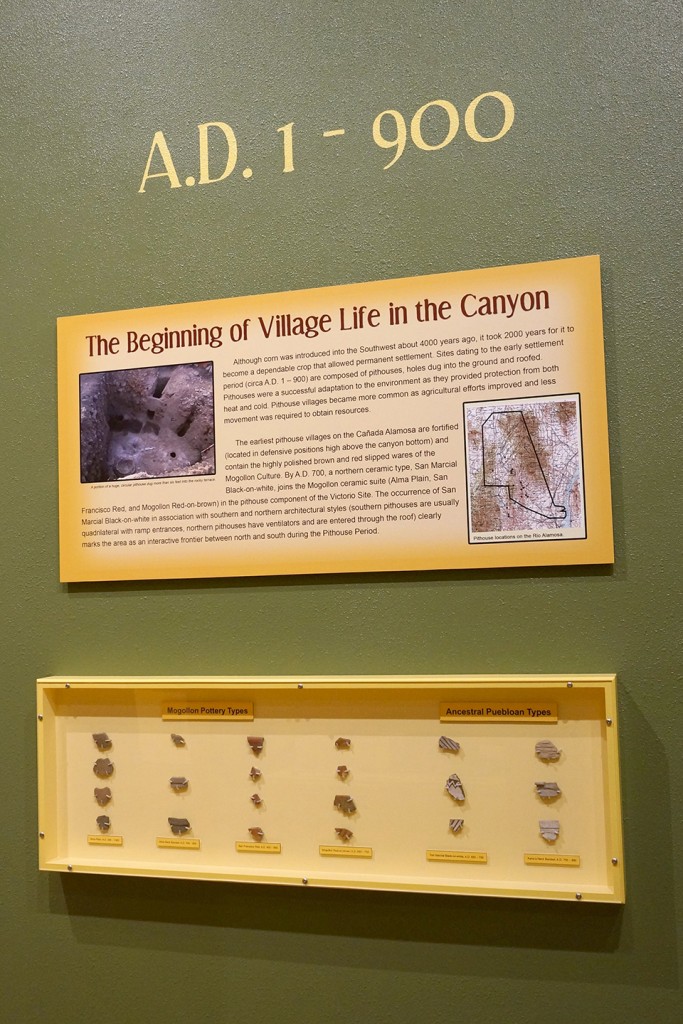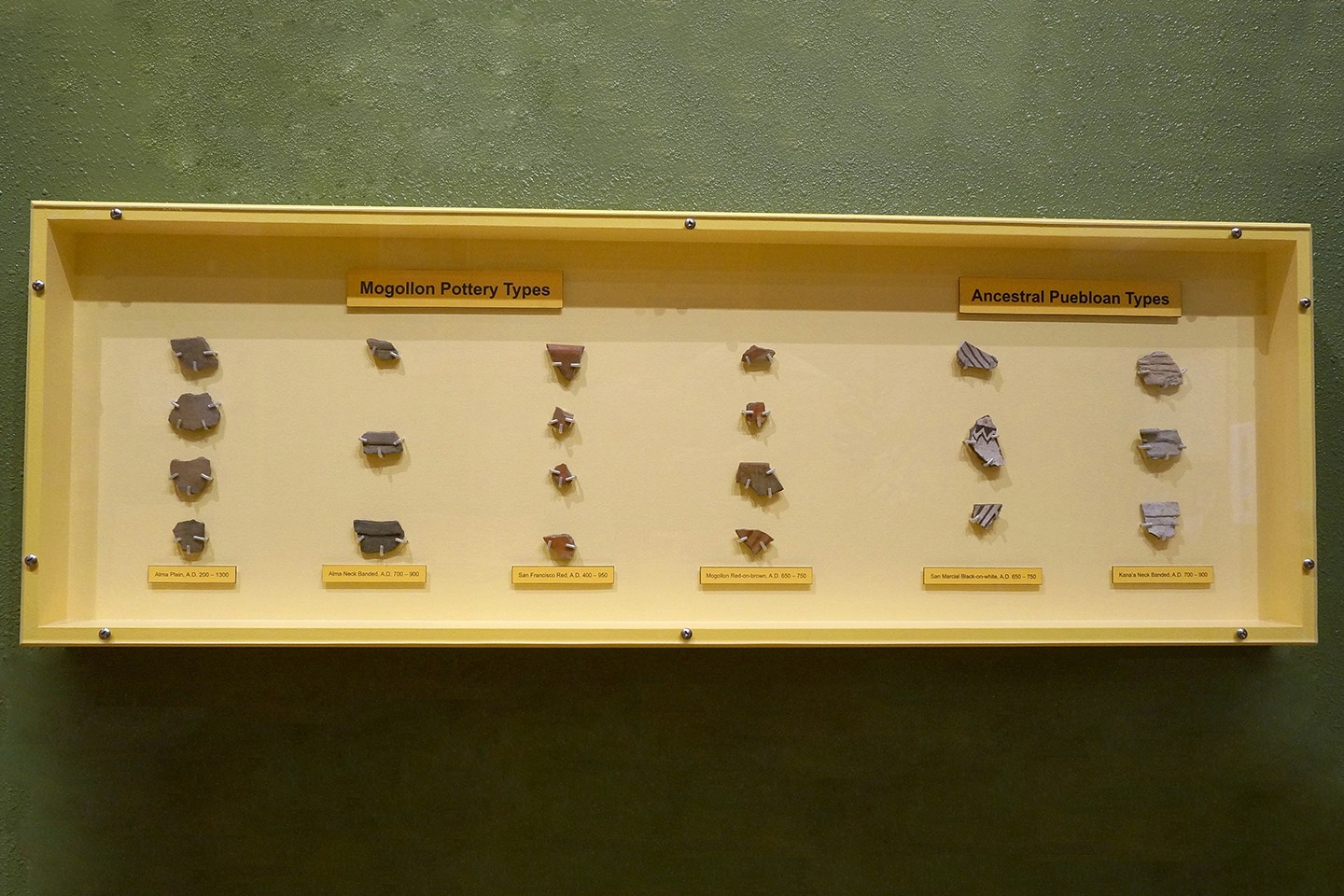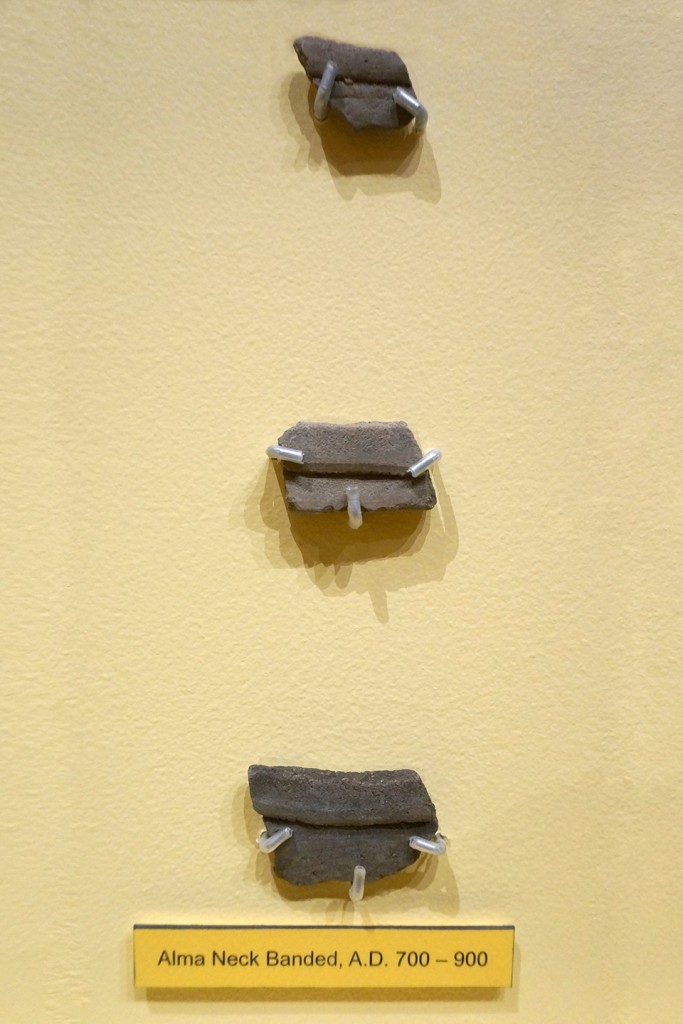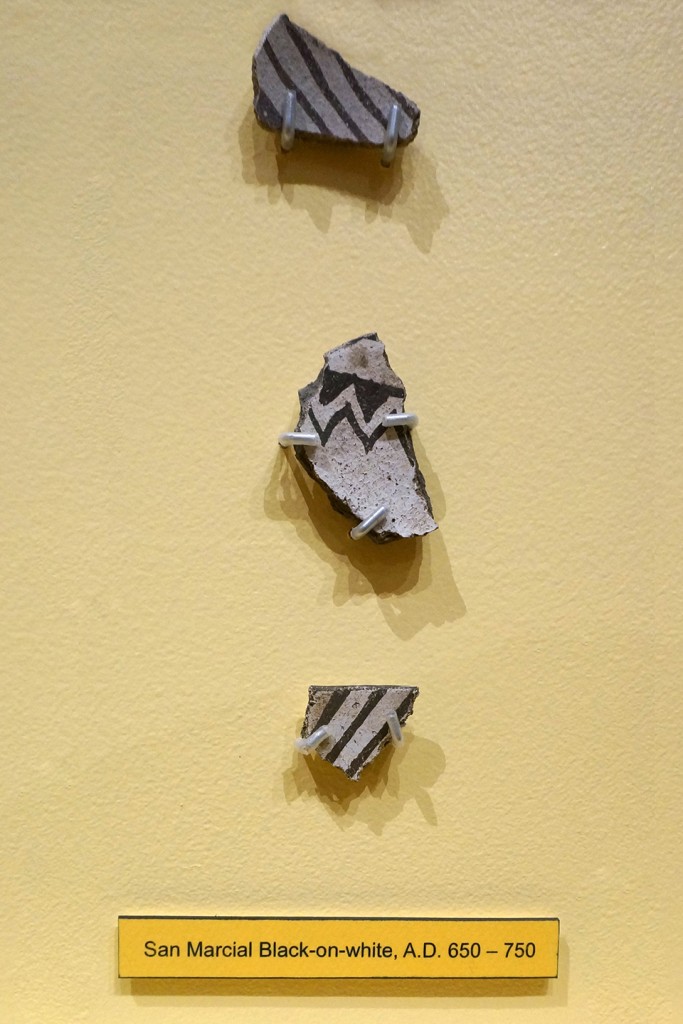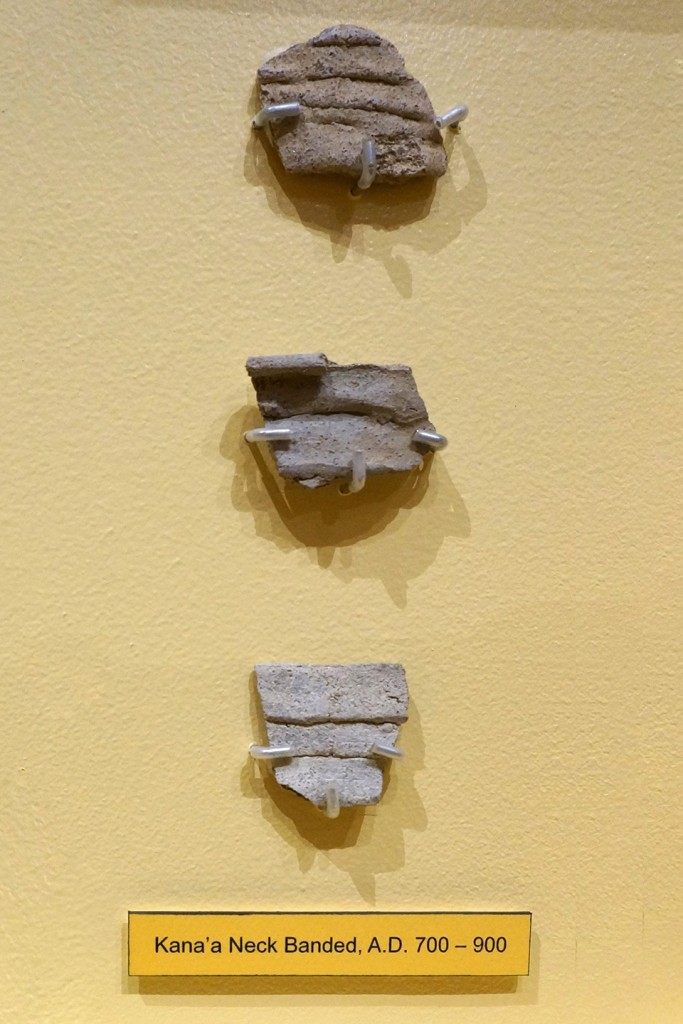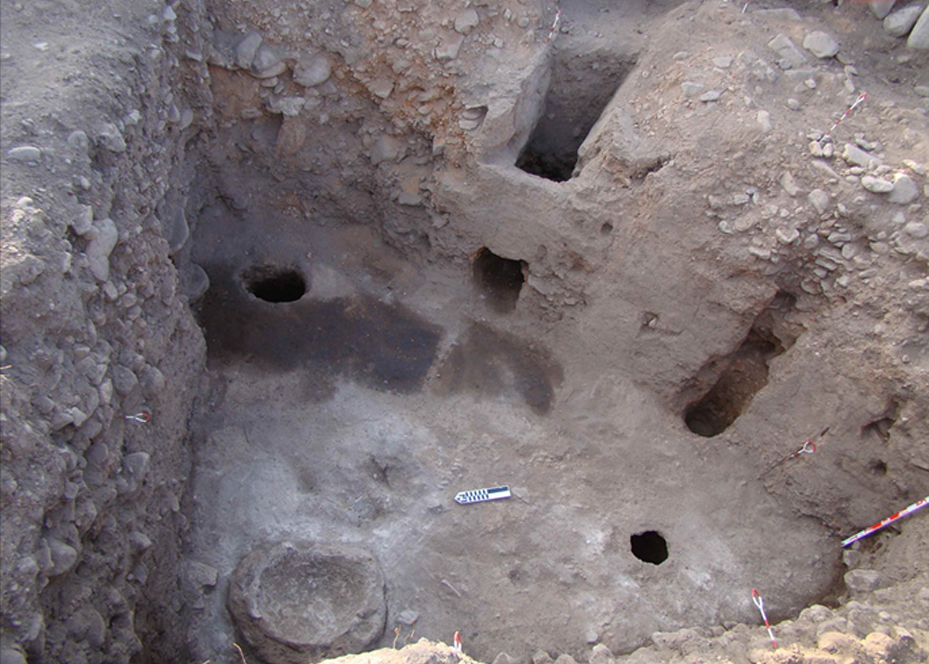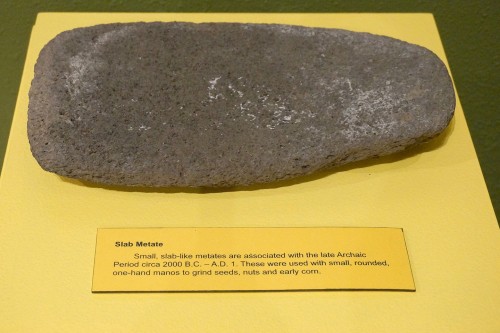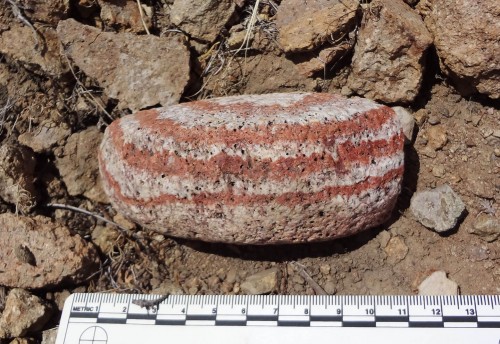The Beginning of Village Life in the Canyon
Although corn was introduced into the Southwest about 4000 years ago, it took 2000 years for it to become a dependable crop that allowed permanent settlement. Sites dating to the early settlement period (circa A.D. 1 – 900) are composed of pithouses, holes dug into the ground and roofed. Pithouses were a successful adaptation to the environment as they provided protection from both heat and cold. Pithouse villages became more common as agricultural efforts improved and less movement was required to obtain resources.
The earliest pithouse villages on the Cañada Alamosa are fortified (located in defensive positions high above the canyon bottom) and contain the highly polished brown and red slipped wares of the Mogollon Culture. By A. D. 700, a northern ceramic type, San Marcial Black-on-white, joins the Mogollon ceramic suite (Alma Plain, San Francisco Red, and Mogollon Red-on-brown) in the pithouse component of the Victoria Site. The occurrence of San Marcial Black-on-white in association with southern and northern architectural styles (southern pithouses are usually quadrilateral with ramp entrances, northern pithouses have ventilators and are entered through the roof) clearly marks the area as an interactive frontier between north and south during the Pithouse Period.

